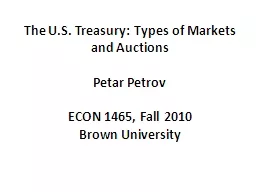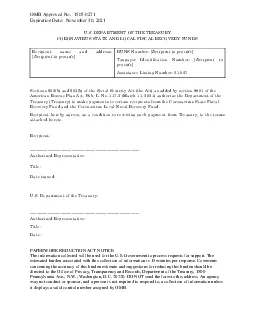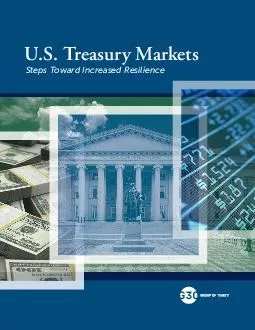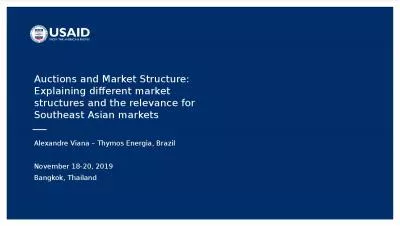PPT-The U.S. Treasury: Types of Markets and Auctions
Author : jane-oiler | Published Date : 2015-09-26
Petar Petrov ECON 1465 Fall 2010 Brown University What is a Treasury US Government debt obligations backed by its full faith and credit Bills lt 1y Notes 15y Bonds
Presentation Embed Code
Download Presentation
Download Presentation The PPT/PDF document "The U.S. Treasury: Types of Markets and ..." is the property of its rightful owner. Permission is granted to download and print the materials on this website for personal, non-commercial use only, and to display it on your personal computer provided you do not modify the materials and that you retain all copyright notices contained in the materials. By downloading content from our website, you accept the terms of this agreement.
The U.S. Treasury: Types of Markets and Auctions: Transcript
Download Rules Of Document
"The U.S. Treasury: Types of Markets and Auctions"The content belongs to its owner. You may download and print it for personal use, without modification, and keep all copyright notices. By downloading, you agree to these terms.
Related Documents














